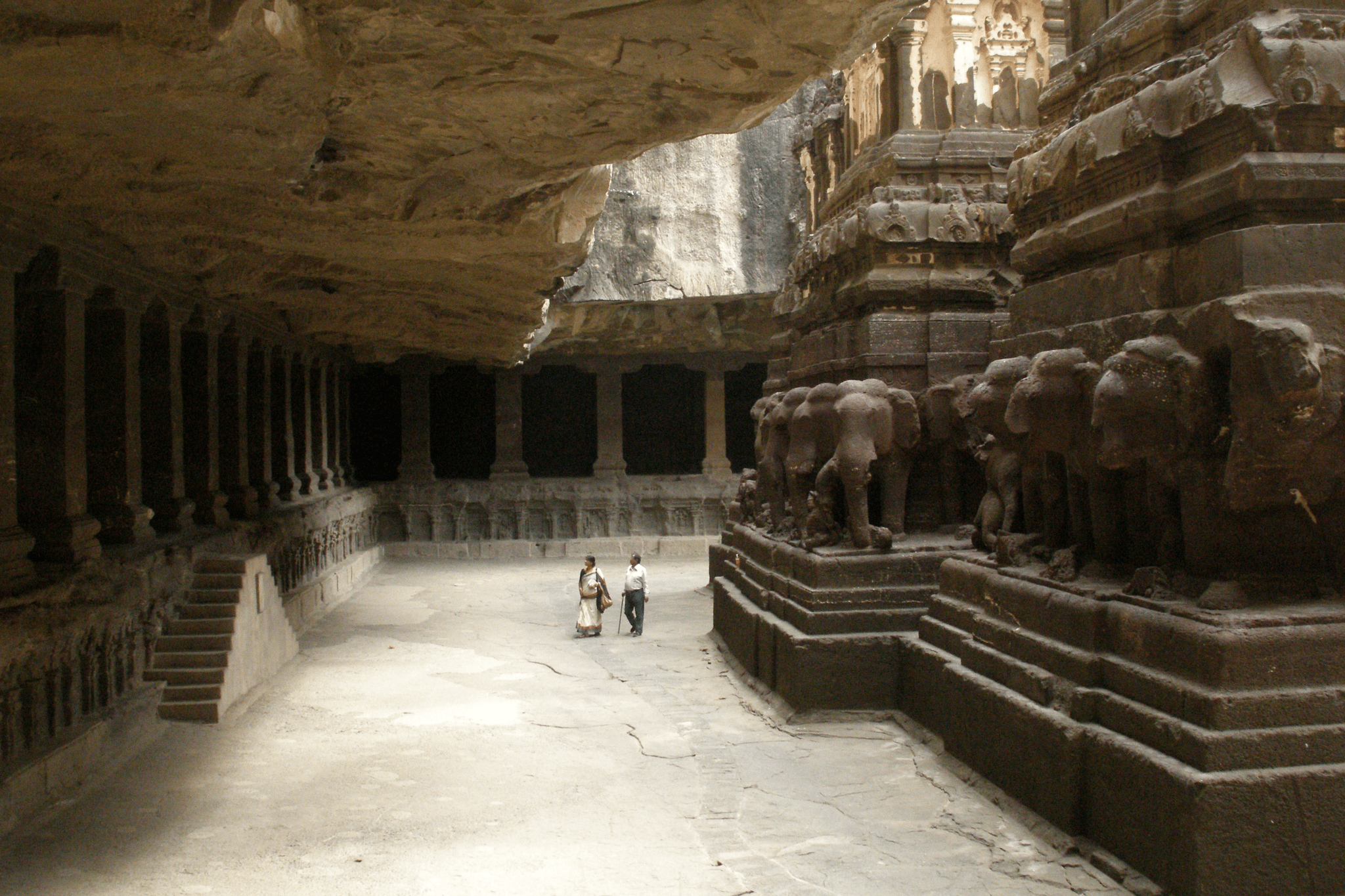Have you ever been to the Taj Mahal? Ever been enchanted by its beauty? Blown to bits by the detailed architecture, the delicate plant motifs, and strained to look at the towering archways? Have the precision-chipped Ajanta and Ellora caves filled your eyes with wonder? Have you marveled at the charm of the drainage system at Lothal?
All of these are compelling examples of the architecture of India.
Indian Architecture is influenced by the culture and religion of the people. With every generation, and every ruler, we see differences in the monuments built, the designs within, and each little aspect representing the story of the people alive at that time. It is entrancing to look at our buildings and try to imagine the past. We don’t have time machines (yet!), and are not like Lucy, with the ability to go back in time, but instead, we have the art and constructions to help us.
In this article, we will explore the historical flavor of Indian architecture by understanding the evolution and change in architectural styles along with the different types of architecture and look at some of the most famous architectural buildings in India. Let’s begin by looking at the evolution of Indian historical architecture.
Evolution and types of Indian Architecture
The evolution of Indian Architecture spans more than 4500 years, starting at the Indus Valley Civilisation as early as 2600 BC. Let’s go into detail to look at all the different types of architecture in India.
-
Indus Valley
There are granaries and astute drainage systems, public baths, and citadels. Each of these contains minimal decor, with niches that are narrowly pointed, and some sculpted figurines, all either mud-bricked or made out of stone. Stone keeps cool during intense summers, have you ever wished you were living in a stone house on a hot day when the electricity was out?
-
Mauryan Empire
Soon after that comes the Maurya Empire, with impressive rock-cut architectural pieces (primarily Buddhist). Monasteries, walled and moated cities were mostly constructed with multi-storied buildings and caves. Some of the most important features of architecture from this period include wood arches, Greek features, geometrical cut-outs, and stupas.
-
Gupta Architecture
Next chronologically is the Gupta Architecture, where the only rock-cut architectural pieces are the Ajanta Caves. But this is when Hindu temple architecture begins to appear. Detailed paintings, columned porches, chaitya halls, and divine idols.
-
Islamic and Mughal Styles
Next up are the types of Islamic and Mughal Architecture. Around the 7th century AD, monuments began to reflect native Indic, Persian, central Asian, Arabic, and Ottoman Turkish. Aspects range from scalloped arches, domes, Iranian columns with Indian corbelled arches, minarets, cusped screen arches, bold contrasting colors, white marble, large halls, vaulted gateways that are delicately ornamented and Buddhist pagodas. If you like Mughal history and want to learn more about medieval architecture, check this out.
-
Regional Styles
Around the same time, we see beautiful Rajput architecture that is also influenced by Mughal styles, Solanki styles, ornate havelis, chhatris, jharokhas, and step-wells. As we noted earlier, each culture brought with it a new amalgamation of styles, like Sikh Architecture, influenced by Islamic and Mughal styles, with frescoes and onion domes like at the Golden Temple. Maratha Architecture shows through brick and mortar elements, minimal forts, with decorated Deccan style pointed arches. Dzong Architecture is way up in the Northeastern part of India, with inward sloping walls, flared roofs, massive wood and iron doors, courtyards and temples decorated in art motives, and so on.
-
Colonial Styles
Finally, the colonial architecture reflects the colonizer’s identity and religion. British Gothic architecture is visible in the Chhatrapati Shivaji Maharaj Terminus, Bombay High Court, Gateway of India, and Taj Mahal Palace Hotel. Art Deco movements of the early 20th Century can be seen at the Eros Cinema building, and at the old apartments at Marine Drive in Mumbai. Portuguese churches, Danish forts, Dutch Tombs, French Settlements… The list is endless.

So many lovely buildings, all erected at different times over the history of India, are as exquisite as can be! In the next section, we bring you some from an non-exhaustive list of some buildings, the architectural details of which amaze us every time!
Famous Architectural Buildings in India
Let’s look at some of the most famous architectural buildings in India.
- The Great Stupa of Sanchi
- Ajanta and Ellora Caves

- Jama Masjid
- Humayun’s Tomb
- Akbar’s Tomb
- Taj Mahal
- Hawa Mahal
- Chandra Mahal
- Golden Temple
- Bombay High Court
- Gateway of India
- Victoria Memorial
There are so many pieces of architecture to go over, and so much history to dive into, all of which you will cover in much more detail when we go over it in the course at ISDI, helping you evaluate the evolution of Indian Architecture.
Ever wanted to know what a jungalow is? Check this out for some references on modern interior design.
Scope of Architecture in India
If reading about some of the most beautiful buildings in the country fills you with the motivation to pick architecture as a career path, this section is for you!
Architecture in India is pretty high paying, and this career offers you a lot of growth and development.
A B. Arch degree (Bachelor of Architecture) is a full time, 5 year program where you will learn a wide variety of courses, from history of architecture, to theory of structures, each course designed to help you hone the creativity and drafting skills to make you a talented architect.
During your degree you will intern at companies, or even with the Indian government to practice the nitty-gritties of the trade on the job. Often this internship later becomes a full time job.
The professions that you can take up with this degree are: building architect, town planner, landscape architect, interior designer, and much more!
How can ISDI help:
ISDI offers various design programs such as Strategic Design Management, Product Design Fashion Design, Fashion Communication and Styling, Interior Design and Strategic Design, Communication Design, and Management. Pursuing one of the degree programs, that is, Bachelors in Design (B.Des) – 4-year program or Postgraduate In Design (PGDI) – 11 months program. Either of the programs is an alternative to a career in fashion and design.
The ISDI campus is located in the business district of Mumbai, the commercial center of India. ISDI consists of a curriculum that is based on that of the Parsons School of Design, experienced and industry-leading faculty, and practical project-based training, all situated on a state-of-the-art campus. ISDI is just the right place for someone looking to start a career in design.








